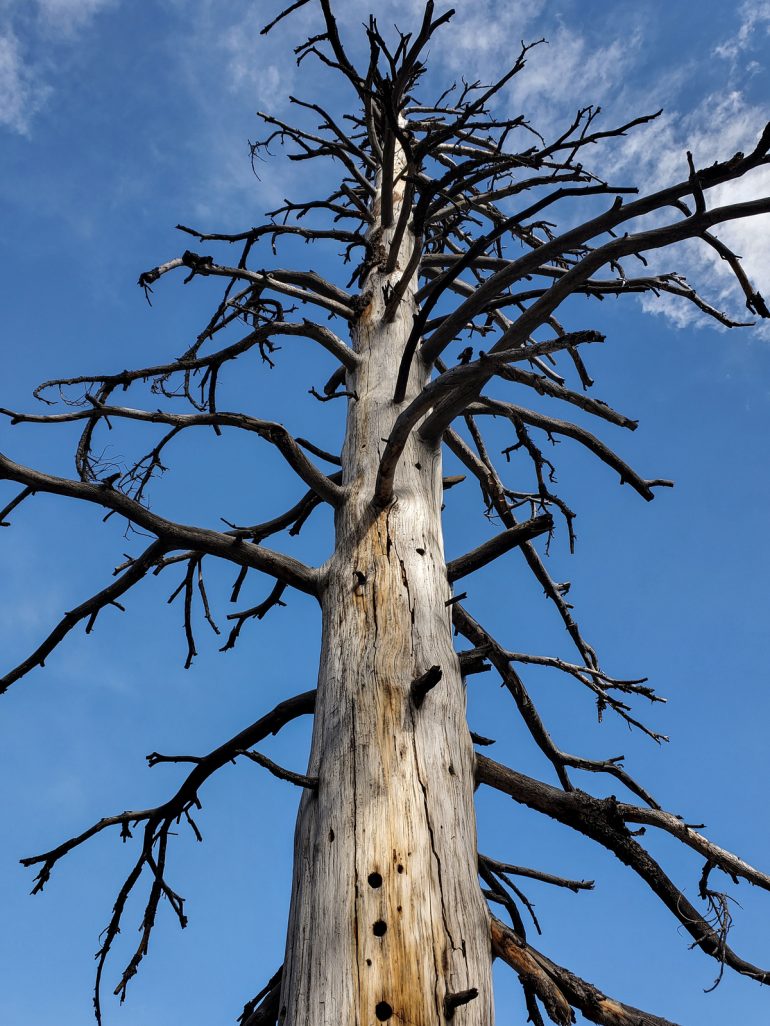From expansive blackouts in California to enormous wildfires in Australia, it seems that wildfires are becoming a more prominent issue around the world. The Environmental Protection Agency (EPA) has been tracking wildfire data since the early 1980s and lists wildfires as a climate change indicator. According to the EPA, there has been an increase in acres burned due to wildfires. From 1985 to 2020, the number of acres burned annually has tripled, with 10 million acres burned in 2020 alone in the United States. While it’s apparent that wildfires destroy trees and animals present in forests, what do they do to unseen organisms? The damage these intense fires cause to microbes is difficult to understand. Could increasing wildfires permanently damage the soil microbiome necessary for sustaining a healthy ecosystem?
The intense heat of wildfires drastically changes the nutritional characteristics of forest soil. Boreal forests are vast stretches of forests all along Canada and other northern regions with low precipitation throughout the year.The soil nutrients are extremely important to the diversity of microbes living in the soil; when the proper nutrients are available, a diverse microbiome necessary for boreal forest ecosystems can form. Some important soil nutrients and properties that are crucial to the microbiome are pH, carbon, nitrogen, and phosphorus. In boreal forests, although soil pH levels remain relatively normal after a fire, the topsoil layer has “significantly lower amounts of [carbon] even 42 years after disturbance,” with carbon levels recovering significantly 60 years after the fire.(Koster) This long-term reduction of carbon largely affects microbes that rely on C sources for energy. Fortunately, the effects of wildfires on nitrogen and phosphate are largely temporary, with both nutrient levels recovering in under a year (Certini).
When the properties of the soil change, the microbiome within that soil also changes to adapt to the new conditions. After a wildfire, a majority of the microbes present in the soil die from the heat of the burn, and those that do survive the initial burn are often incapable of living in the new soil conditions. According to Dr. Holden’s analysis of forest disturbances, soil biomass reduced 52%—56% after a fire. The soil is enriched with ‘fire response’ microbe families, such as Acidobacteria and Betaproteobacteria, one year post-fire and help restore the ecosystem. These microbes are adapted to thrive in a low pH environment and slowly remediate the soil’s nutrients. For example, Betaproteobacteria can be photoautotrophic, gaining carbon from environmental sources and using ions from the soil for energy. As seen in Chinese boreal forests, once the soil conditions become closer to pre-burn conditions, the ‘fire response’ bacterial community numbers will resemble pre-fire conditions; however, this process takes time (Xiang). In Xiang’s paper, researchers observed a fully restored forest 11 years after the burn, with the diversity of microbes returning to the pre-fire state. Additionally, it has been observed that a coniferous forest can take up to 12 years to recover to its pre-burn biomass. (Fritze) This leads to another issue: since recovery takes at least a few years, what happens if another catastrophic fire takes place within that time frame?
Wildfires are becoming more intense:will there be enough time for the soil microbiome to recolonize after each burn? Forests are taking longer to recover from the effects of wildfires.(Stevens-Rumann) A major player in microbe recolonization is the spread of microbes from non-burnt areas to burnt areas. They identify that a key reason for this delay is a lack of water, but also attribute some of the lesser forest recoveries towards changes of soil species. One reason for the lack of water is the lack of plants. With the loss of plants, humidity control decreases and soil microbiomes struggle to recover. Plants and microbes work together to recover a forest, and because of climate change and wildfires, there is less water. With these reasons, forests are having a tougher time recovering from wildfires.
Not only are wildfires becoming larger, but forests are also taking longer to grow back. This is partially due to longer microbial remediation times to prepare the soil for plant regrowth, and the most significant reason for this is climate change. Climate change contributes to the greater severity of wildfires and decreased amount of water in these forests, in turn causing a slower recovery of microbial communities and plants in forests. Slower recovery of forests may lead to further devastating effects that could cause forests to never recover. A longer period of unrestored forest may lead to large scale erosion, harming the ecosystem further. Wildfires pose an enormous threat to forests as we know them. A solution must be found to preserve our forests and to reduce the effects of climate change.
References:
- “Climate Change Indicators: Wildfires.” EPA, Environmental Protection Agency, www.epa.gov/climate-indicators/climate-change-indicators-wildfires.
- Aguilera, R., Corringham, T., Gershunov, A. et al. Wildfire smoke impacts respiratory health more than fine particles from other sources: observational evidence from Southern California. Nat Commun 12, 1493 (2021). https://doi.org/10.1038/s41467-021-21708-0
- Whitman, Thea, Ellen Whitman, Jamie Woolet, Mike D. Flannigan, Dan K. Thompson, and Marc-André Parisien. 2019. “Soil Bacterial and FUNGAL Response to Wildfires in the Canadian Boreal FOREST across a BURN Severity Gradient.” Soil Biology and Biochemistry 138: 107571. doi:10.1016/j.soilbio.2019.107571.
- Xu, Yinghua, Jian Sun, Qing Lin, Jing Ma, Yingwu Shi, and Kai Lou. 2012. “Effects of a Surface Wildfire on Soil Nutrient and Microbial Functional Diversity in a Shrubbery.” Acta Ecologica Sinica 32 (5): 258—264. doi:10.1016/j.chnaes.2012.07.007.
- Certini, Giacomo. 2005. “Effects of Fire on Properties of Forest Soils: A Review.” Oecologia 143 (1): 1—10. doi:10.1007/s00442-004-1788-8.
- Stevens-Rumann, Camille S., et al. “Evidence for Declining Forest Resilience to Wildfires under Climate Change.” Ecology Letters, vol. 21, no. 2, 2017, pp. 243—252., doi:10.1111/ele.12889.

